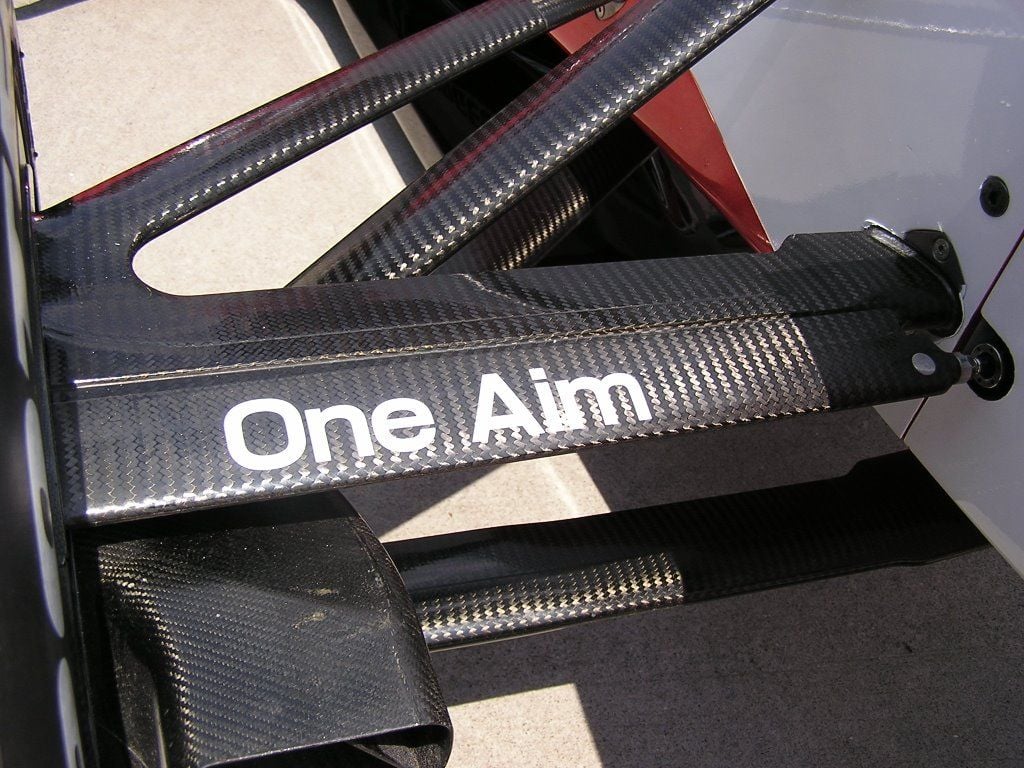carbon fiber crash test
#1
here is question about carbon fiber parts how safe are they in the a crash? what kind of testing do they stand up to.. and is there any regulation from DOT on them
#3
highly unlikely that any common vendor around these forums pays the funds necessary to certify and crash test their carbon fiber parts. Outside of carbon fiber helmets I can't see any vendor of parts like Hartops, hoods, fenders, etc.... receiving DOT approval.
The common belief is that carbon fiber is stronger than steel. This may be true on a pound-for-pound basis. Carbon fiber that is layed for applications such as Indycar and F1 racecars can be engineered to be very strong and dissipate energy in crashes extremely well, but the stuff you find for sale for our vehicles tend to be lightweight parts with relatively low crash worthiness strength IMO. This is just my opinion from parts that I've seen over the years.
When you get into very high end applications I know there are companies that can engineer carbon fiber parts with great strength and crash worthiness but you won't find that with parts commonly sold for our cars. I think companies like Mugen and Spoon might have the resources to absorb the expense involved in certifying and testing parts, but I can't say that I've ever seen data provided by them on any of their parts.
I would never buy a carbon fiber part from a vendor based on it being crash-worthy, it seems that most of those parts are sold for cosmetic upgrades along with weight saving properties. Well engineered carbon fiber race parts yes, stuff being made in some guy's basement or workshop not likely. Keeping the discussion based on the typical part that you may find in the general vending community that we see on a daily basis, not million dollar parts you see in F1.
The common belief is that carbon fiber is stronger than steel. This may be true on a pound-for-pound basis. Carbon fiber that is layed for applications such as Indycar and F1 racecars can be engineered to be very strong and dissipate energy in crashes extremely well, but the stuff you find for sale for our vehicles tend to be lightweight parts with relatively low crash worthiness strength IMO. This is just my opinion from parts that I've seen over the years.
When you get into very high end applications I know there are companies that can engineer carbon fiber parts with great strength and crash worthiness but you won't find that with parts commonly sold for our cars. I think companies like Mugen and Spoon might have the resources to absorb the expense involved in certifying and testing parts, but I can't say that I've ever seen data provided by them on any of their parts.
I would never buy a carbon fiber part from a vendor based on it being crash-worthy, it seems that most of those parts are sold for cosmetic upgrades along with weight saving properties. Well engineered carbon fiber race parts yes, stuff being made in some guy's basement or workshop not likely. Keeping the discussion based on the typical part that you may find in the general vending community that we see on a daily basis, not million dollar parts you see in F1.
#5
Yeah most carbon fiber after market parts are really not strong at all!
A lot are also carbon fiber overlaying fiberglass or something.
Most parts made in carbon fiber are for looks and looks alone.
A lot are also carbon fiber overlaying fiberglass or something.
Most parts made in carbon fiber are for looks and looks alone.
#6
it has to do with how the fiber is laid....direction wise
Carbonfibre is a non isotrope material. That means that all fibres have to point the same direction as the forcelines through the material. If this is not the case, there will be an opposite effect. To be understandable, wood is also not isotrope, aluminium and copper are for sure.
You can also notice on the table that carbon fibres are 3 times stronger and more than 4 times leighter than steel!
Carbonfibre is a non isotrope material. That means that all fibres have to point the same direction as the forcelines through the material. If this is not the case, there will be an opposite effect. To be understandable, wood is also not isotrope, aluminium and copper are for sure.
You can also notice on the table that carbon fibres are 3 times stronger and more than 4 times leighter than steel!
Trending Topics
#8
Originally Posted by 4bang6,Nov 3 2010, 06:27 PM
it has to do with how the fiber is laid....direction wise
Carbonfibre is a non isotrope material. That means that all fibres have to point the same direction as the forcelines through the material. If this is not the case, there will be an opposite effect. To be understandable, wood is also not isotrope, aluminium and copper are for sure.
You can also notice on the table that carbon fibres are 3 times stronger and more than 4 times leighter than steel!
Carbonfibre is a non isotrope material. That means that all fibres have to point the same direction as the forcelines through the material. If this is not the case, there will be an opposite effect. To be understandable, wood is also not isotrope, aluminium and copper are for sure.
You can also notice on the table that carbon fibres are 3 times stronger and more than 4 times leighter than steel!





 but thats why they're made of chromoly steel.
but thats why they're made of chromoly steel. 